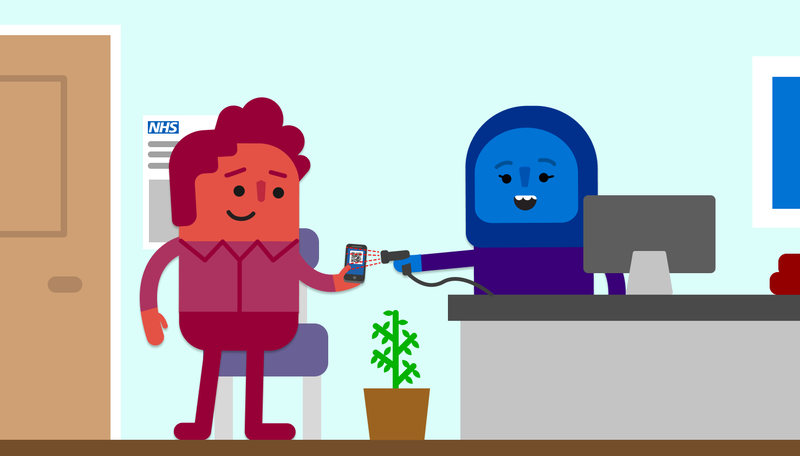Admit Me

Experiment date: February to April 2021
In collaboration with: Wharfedale Hospital
What is the problem?
When patients or service users arrive at care settings, there is often a need to collect their demographic information to create or locate their digital records. Currently, this is mostly done by talking and typing.
Why is this an issue?
- When patients arrive at a care setting it can take time to create a record or find their details.
- Patients have to give personally identifiable information.
- This process is often time-consuming, causing queues to build up.
- Some patients find verbal communication more difficult, for example if English is not their first language or because of a medical condition or disability.
- Miskeying contact details can lead to confidential patient information being sent to the wrong person.
- This can also lead to the patient not receiving important follow-up information or test results, creating anxiety for patients, and extra work for staff in tracking them down and delays to follow-up treatments.
- Updated patient details often do not flow to other settings, even between two departments in the same hospital.
What would be the benefit of addressing this?
- Our initial calculations showed that if we could halve the time taken to create a record in A&E, outpatients and new GP registrations (and avoid wasted time 'hunting' for patient data) we’d save time to the value of £95 million per year.
- It would greatly improve patient experience.
- It would reduce wastage (for example letters sent to wrong place).
- It would ensure we have the most current, accurate demographic information at the point of access to services.
Desired outcomes
We wanted to test automatic transfer of demographic information and NHS number from a patient’s mobile device to a clinician’s computer, to:
- save time
- preserve patient privacy
- reduce the potential for introducing errors into the patient record
What did we do?
- User research with clinicians, admin staff and an inclusive range of patients.
- We created a new service in a test version of the NHS App that generates a 2D barcode containing the data the patient chooses to share.
- We created a simulated Patient Administration System to receive data via a scanner when a patient arrives.
- We tested on-site in a hospital outpatient department.
What were the outcomes?
- Reduction in average check-in time from 1 minute 46 seconds to 35 seconds during testing.
- Data which showed that the most time-consuming check-ins involved missing or incorrect contact details.
- User research insights from staff and patients.
- Recommendation report identifying route to roll out.
- Open sourced code of our proof of concept.
If you would like to know more about this project, you can contact us at england.innovation.lab@nhs.net